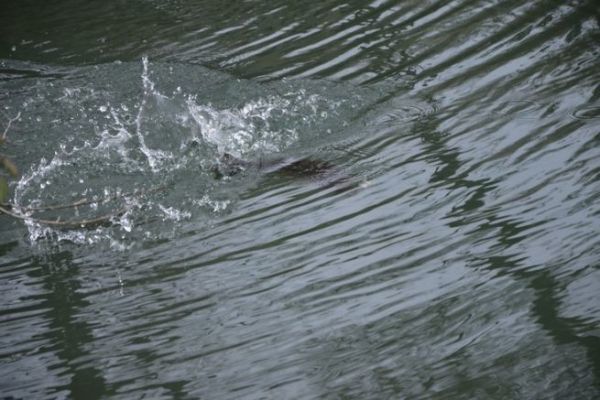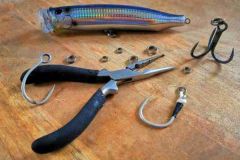Water displacement
The first question you might ask yourself when hearing about water displacement is simply, what does it mean? A lure's water displacement is, as its name suggests, the amount of water it displaces as it swims. The waves created by this displacement are vibrations, which fish can feel through their lateral line.
It's a sense that human beings don't possess, so it's hard to imagine what it might feel like. To illustrate a vibration, throw a stone into the water. Then imagine that all the waves created by the impact of the stone on the surface are the beats of a shad's tail. The higher the wave, the greater the quantity of water displaced, because the larger the stone thrown, the greater the volume of water the wave will contain.

Vibration frequency
The vibrations thus created by the movement of a lure in the water can be picked up by the fish, which will then be able to identify the size according to the frequency of the vibration. It's obvious that a 70 cm pike doesn't need as many tail strokes as a 10 cm roach to cover a metre in the same time. The amplitude of the movement will also not be the same.
Taking a theoretical example, it takes a pike 10 tail strokes against a roach's 100 to cover 1 metre in 10 seconds. If the lure we're using makes 10 movements per metre, it will look like a big fish. We can therefore agree that a lure with a very high vibration frequency (100 beats per metre, for example), even if it's 25 cm long, will be felt by a fish as if it were only 10 cm long.

Fishing application
All this information can easily be applied in fishing action to be more precise in our search. In winter, predators feed less frequently, but if possible on larger prey. To lure them, even if their vision can guide them, you'll need to use a lure that vibrates slowly but with a large amplitude.
On the contrary, if the fish are feeding on fry, as is very common in spring, it's best to use a lure that emits high-frequency vibrations. The choice of lure should not only be based on the fish's sense of sight or hearing, but also on their sense of vibration perception.








